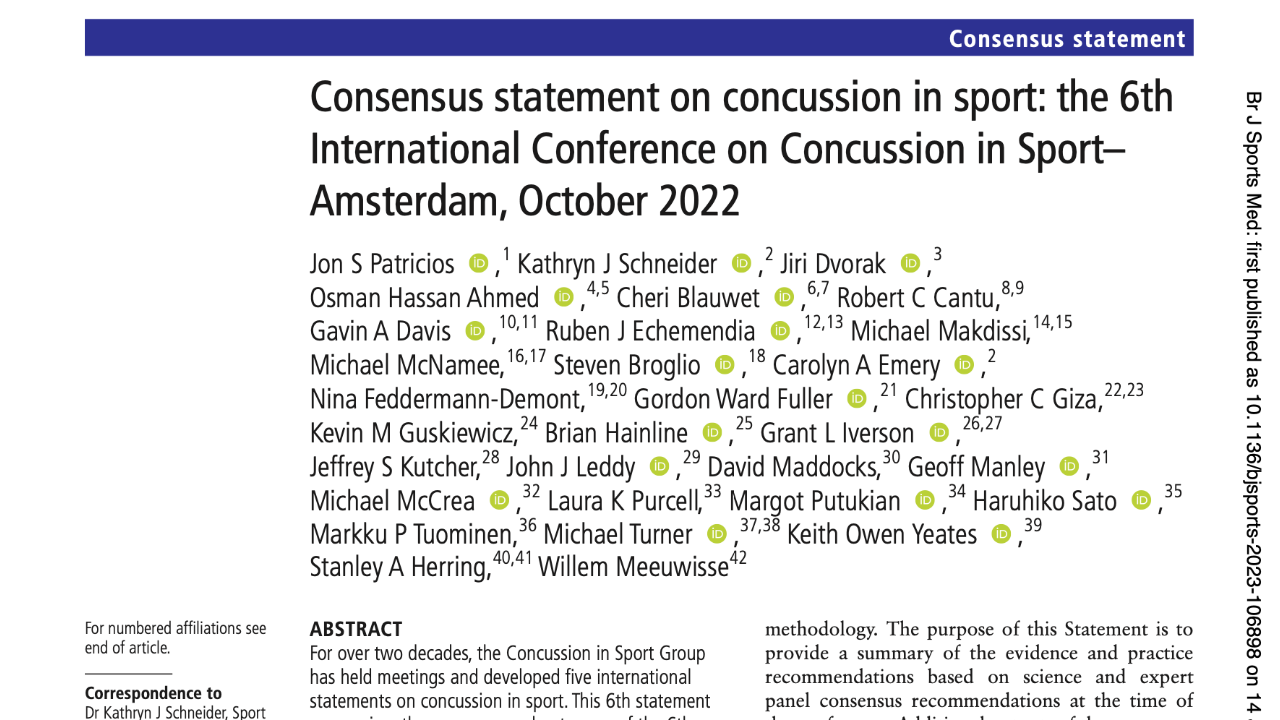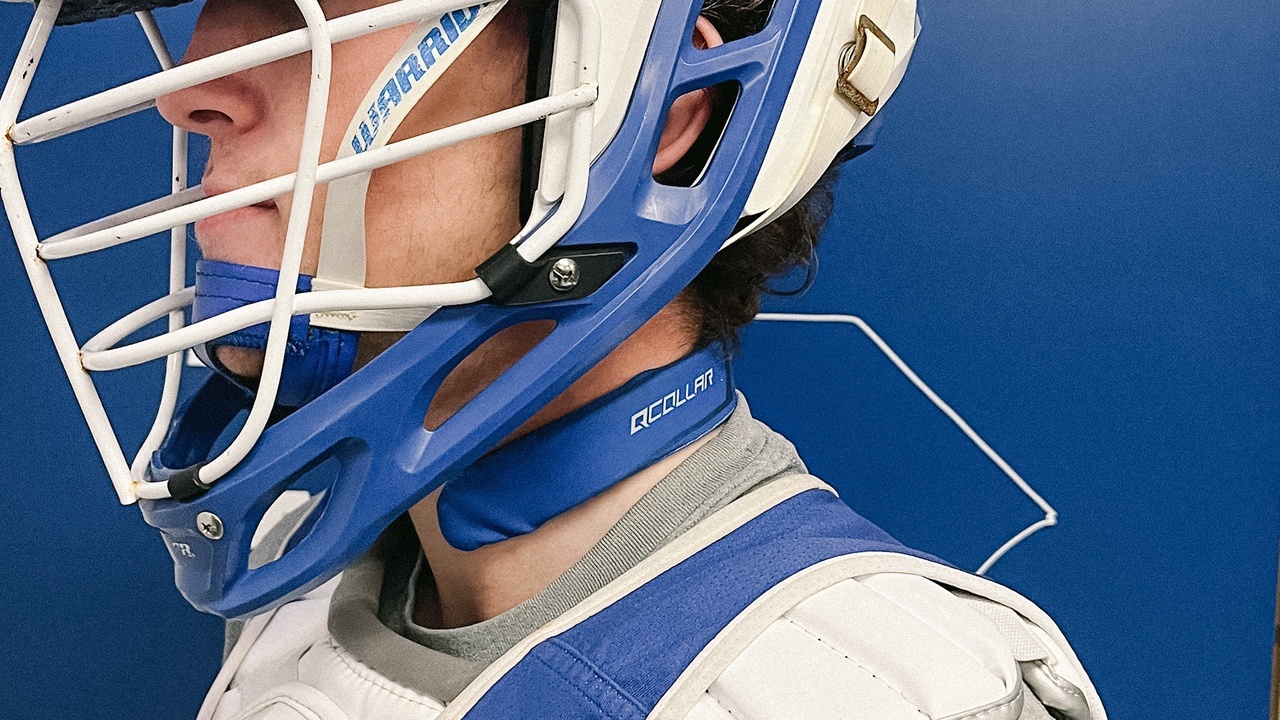Blog
3 Updates Worth Noting from the Latest Consensus Guidelines in Sports Related Concussion

After months of anticipation it is finally here. The Consensus statement on concussion in sport from the 6th International Conference on Concussion in Sport, held in Amsterdam in October 2022, was just published in the June 2023 edition of the British Journal of Sports Medicine. This document brings together the latest research and recommendations regarding sports related concussion.
For some of us who have been treating concussion for decades it has been interesting to observe the changes with each consensus statement as more and more research is being done in the field of sports related concussion. It has also been great to see these consensus statements bringing the health care community...
3 Essential Components to Start & Grow a Vestibular Therapy Practice

Are you a health care provider who is interested in learning more about vestibular therapy? Or maybe, you have started treating patients with dizziness and balance problems, but would like to grow your vestibular therapy practice? If you can relate to either of these that is awesome as there is such a need in this field.
In this blog we will share 3 essential components that have been the backbone for increasing our vestibular therapy practice and seeing well over 150 new vestibular referrals a month. Using these components we have actually scaled our clinic to where we see more vestibular therapy patients than all MSK patients combined, with our number of new vestibular referrals continuin...
How To Treat Anterior Canal BPPV

With going to vestibular therapy courses have you found that learning how to treat BPPV affecting the anterior canal is often overlooked. This is understandable to some extent given that other vestibular conditions are more prevalent. Specifically with BPPV, according to Bhattacharyya, it only affects the anterior canal up to 3% of the time. Not nearly as common as the other two canals, where much of the training focuses on.
With that being said, BPPV affecting the anterior canal is rare, but it does happen. So, if you are treating patients with dizziness it is just a matter of time until you may see this form of BPPV. When you do it will be good to have a treatment technique up your sleeve...
Ewald's Laws for BPPV & Nystagmus

Ever heard of Ewald's Laws?
If not, with assessing BPPV do you ever wonder why:
- With BPPV affecting the posterior canal, going into the Dix-Hallpike Test is more provocative than sitting up after?
- With BPPV affecting the lateral canal, going into the Supine Roll Test the side that is more provocative is not always the affected side?
- With cupulolithiasis affecting the lateral canal, the nystagmus beats towards the affected ear with the Lean Test?
Maybe you have not, but understanding the WHY behind these will help us treat the atypical forms of BPPV. It will also help us determine if there is another vestibular condition at play, mimicking BPPV.
What are Ewald’s Laws?
There are thr...
Repeat Positional Testing - Are You Willing To Risk It For The Biscuit?

A recent Instagram post caught my eye as it indicated that given a particular study, clinicians should not repeat positional testing after performing a canalith repositioning technique for BPPV. The reason for this, I believe, was due to the risk of causing the loose otoconia to fall right back into one of the canals.
To be honest this post surprised me. I just assumed that it was common practice now-a-days to repeat positional testing to see the effect of treatment. Don’t we want to evaluate the effect of our treatment? Then, when I went back to find that post and hopefully get the study they were referring to, it was buried deep in the social media abyss.
I was a bit disappointed that I ...
What is the Zuma Maneuver?

BPPV is the most common cause of dizziness across the lifespan. Fortunately it is usually straight forward to treat. At times it can, however, be a bit tricky, especially if it involves the lateral canal. According to 2017 Clinical Practice Guideline for BPPV 5-15% of the time the lateral canal is involved. When the lateral canal is involved there are several treatment options. One of the newer ones being the Zuma maneuver.
Over the years I have become pretty comfortable treating lateral canal BPPV. I like using the BBQ Roll if canalithiasis is involved. If cupulolithiasis is involved I like using the Head Shake Maneuver. I will then follow it up with the BBQ Roll, if needed.
These are my...
Q-collar: Next Big Thing for Concussion Prevention?

It is well known that concussions are common. They can, however, be a challenge to treat, both for the patient/athlete and care provider. Given such, there have been attempts to prevent concussion through education awareness, rule changes in sport, and equipment (i.e. helmet) modification.
With that in mind have you heard of the Q-collar? There are claims that is has the ability to reduce the risk and severity of a concussion?
A few years ago I started seeing football players in the CFL and NFL wearing something around their neck. It looked like a skinny set of ear muffs. When I looked into it I found out that the device was supposed to prevent concussions, or at least the severity of one....
Drugs and Oculomotor Testing

Have you ever wondered about the relationship between drugs and oculomotor testing? From time to time I was curious, but never looked into it until I received an email a few months ago from Ocular Data Systems asking if I could work with them on a project to provide online lessons regarding vestibular physiology and how to analyze nystagmus findings for law enforcement officers, prosecutors, and toxicologists.
It seemed like a unique opportunity, a Canadian physical therapist helping educate law enforcement officers, prosecutors, and toxicologist from the USA. What I did not realize until then is that there is a group of very highly trained non-medical professionals who perform oculomotor t...
Concussions & Football, Getting Back to Some of the Basics

I am not sure any of you watched the NFL game with the Bills and the Dolphins on Sunday September 25, 2022? If you did you would have seen the Dolphin’s QB Tagovailoa get pushed backwards, causing him to fall and hit his head on the turf. He was able to get up on his own. However, as he jogged across the field his legs looked like the scene of Bambi on the ice. If you missed it, here is a REPLAY.
With that, if you are like me, you were thinking that he was definitely going to be out for the rest of the football game. Then, the shocker came when he was allowed to resume play.
Did he sustain a concussion?
What are the signs and symptoms of a concussion?
Recognizing and evaluating concussio...
Light Cupula - What Is It and What Should I Do About It?

Have you ever observed sustained (lasting > 60 sec) geotropic nystagmus with positional testing for BPPV and were not quite sure what those atypical findings were about? If so, you are not alone. According to the literature this finding is not as result of BPPV, but rather due to a light cupula which was first proposed by Hiruma in 2004.
My journey with experiencing a light cupula
Clinically, I actually do not remember ever seeing someone present with sustained geotropic nystagmus. If I did, the patient likely got better, not as a result of my treatment, but rather due to the natural history, which we will cover later in this post.
This past summer though, I released an online course call...


